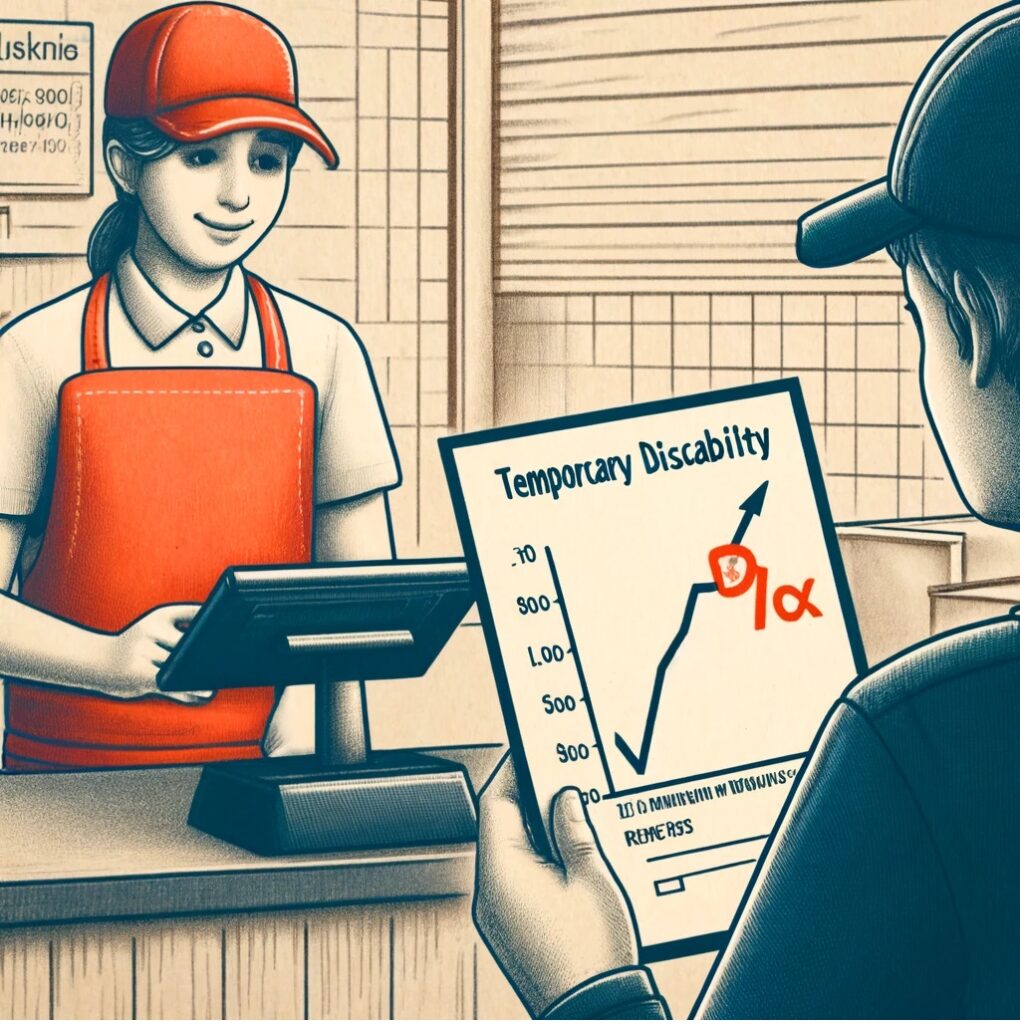The recent changes in California’s minimum wage laws have significant implications for workers’ compensation claims, particularly regarding temporary disability rates. At Franco Muñoz Law Firm, we want to help you understand how these changes might affect your benefits.

The New Minimum Wage
Effective April 1, 2024, the minimum wage for many fast-food workers in California increased from $16 to $20 per hour. This change was brought about by Assembly Bill (AB) 1228, signed into law by Governor Gavin Newsom on September 28, 2023. This law added new sections to the Labor Code, specifically §§ 1474, 1475, and 1476.
Impact on Average Weekly Wage (AWW)
The increase in minimum wage means that the average weekly wage (AWW) of employees will also increase. This, in turn, affects the rates for indemnity payments, including temporary disability benefits. But the critical question is whether this increase also applies to existing cases where temporary disability is already being paid out. The answer is that it might.
Calculating AWW for Injuries After April 1, 2024
For workers injured on or after April 1, 2024, the calculation of AWW will definitely be affected by the new minimum wage. However, the impact might extend to workers injured before that date as well.
Earning Capacity and the Law
California Labor Code § 4453(c) outlines four methods for calculating AWW. One significant provision is § 4453(c)(4), which states that if the standard methods for calculating AWW are not fair or reasonable, the AWW should represent the injured employee’s earning capacity at the time of injury. The case of Goytia v. WCAB (1970) established that earning capacity should consider overall capability and productivity, not just earnings at the time of injury.
Scheduled or Anticipated Wage Increases
In Grossmont Hospital v. WCAB (Kyllonen) (1997), the Court of Appeal held that wage increases scheduled or reasonably anticipated at the time of injury could be considered in determining an injured worker’s earning capacity. This means that if a wage increase was expected at the time of your injury, it should be factored into your AWW.
For example, in Camberos v. Lyon (2019), the WCAB ruled that a minimum wage increase enacted before the applicant’s injury should be considered when calculating her AWW. This principle means that for fast-food workers injured between September 28, 2023, and April 1, 2024, the scheduled wage increase could affect their AWW and temporary disability rates.
Employers’ Responsibilities
Employers must evaluate factors known at the time of injury to determine an employee’s earning capacity. They are not required to guess about potential increases but should consider any specific, demonstrable evidence of anticipated wage increases. This includes reviewing any minimum wage increases enacted before the employee’s injury that took effect later.
Practical Application
There are no strict rules on how to calculate AWW to account for the new minimum wage. However, if an employee was earning the minimum wage before April 1, 2024, it might be appropriate to increase their AWW by 25% to match the minimum wage increase. Employers should also consider their practices of paying above the minimum wage, similar to the Camberos case.
Ultimately, employers must make a good-faith effort to determine what the employee’s earnings would have been if the injury had not occurred.
Conclusion
Understanding the impact of minimum wage changes on temporary disability rates can be complex. At Franco Muñoz Law Firm, we are here to help you navigate these changes and ensure you receive the benefits you deserve. If you have questions about your workers’ compensation claim, contact us today for a free consultation.







